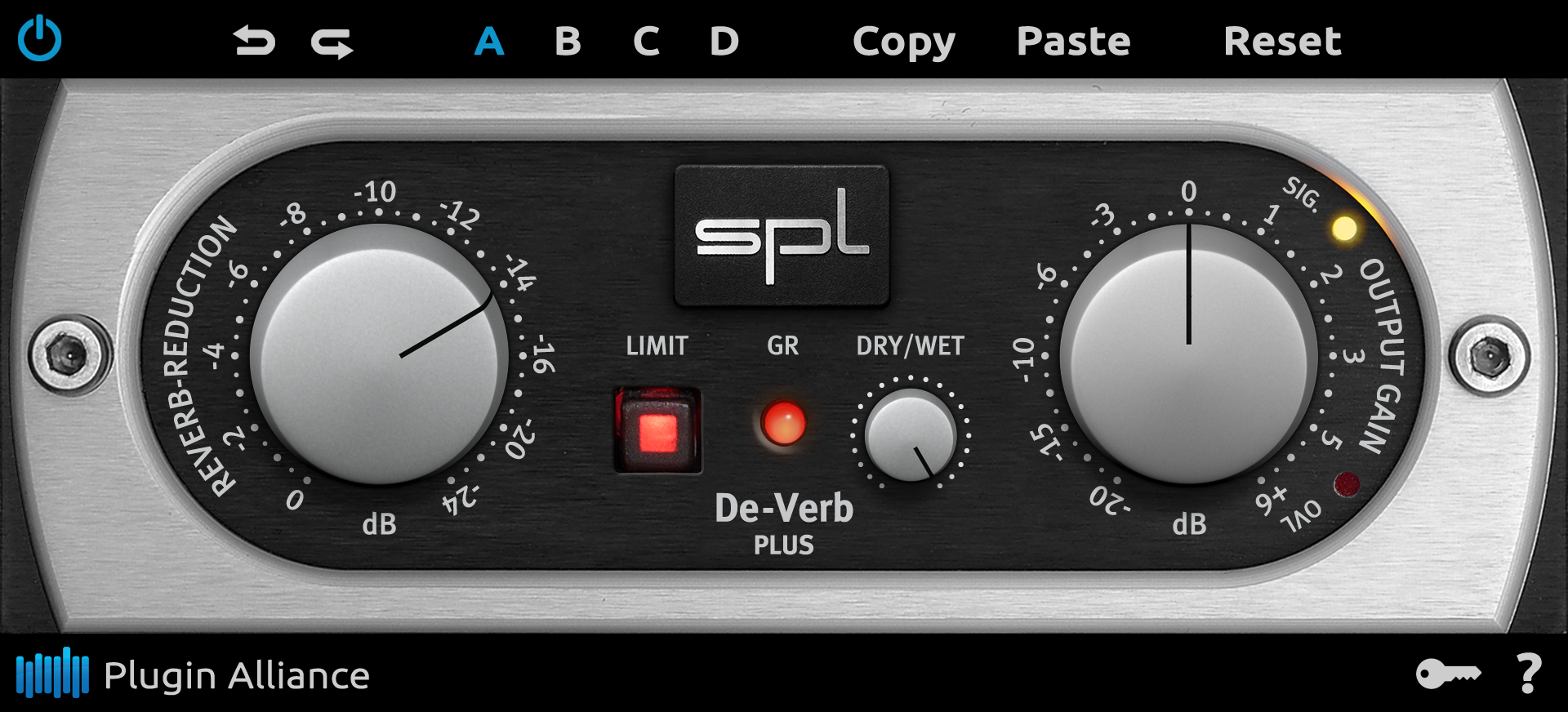New paraphonic dual-filter analog synthesizers elevate the UNO lineto new levels of sound design, flexibility and connectivity
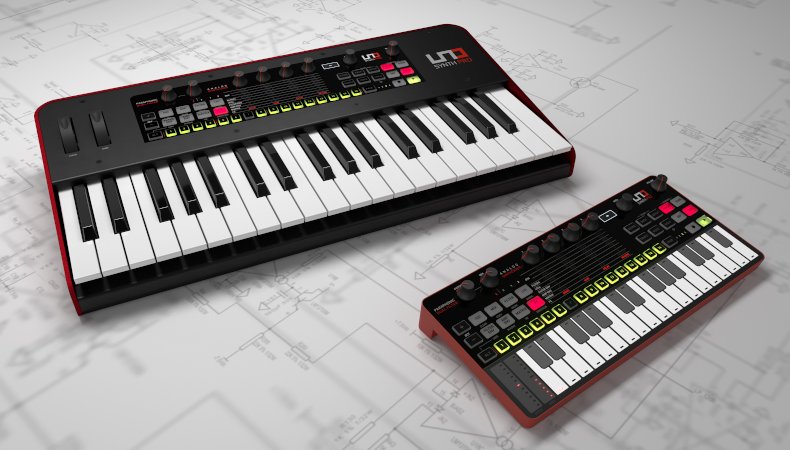
January 13, 2021 – IK Multimedia announces UNO Synth Pro and UNO Synth Pro Desktop. Developed in collaboration with Italian boutique synth-maker Soundmachines, both these new analog synthesizers take the groundbreaking UNO Synth monophonic synth and expand it in nearly every section: more oscillators, more filters, more sequencer memory, more effects, more presets, more connections and more programmability. UNO Synth Pro puts this amazing new sound engine in a rugged metal chassis with a 37-key synth-action Fatar keybed, while UNO Synth Pro Desktop provides a more portable form factor to travel anywhere.

The UNO Synth Pro’s unique dual-filter, 3-oscillator paraphonic design lets it create nearly any synth sound imaginable, and with 256 presets, a new 64-step sequencer and expanded CV/Gate and audio connections, users will quickly find it’s the ideal creation station for any outboard rig.
Huge, real analog sound
Three analog oscillators offer continuously variable waveshape, including pulse-width modulation. Oscillators can be hard-synced for more harmonically-complex tones, and oscillator FM (frequency modulation) lets users shape everything from bell-like sounds to screaming industrial tones. UNO Synth Pro even includes ring modulation for wobbly, sci-fi sound, and a white noise generator for a wide range of percussive sounds and epic rises.

Dual-filter design with 24 available modes
In addition to the original UNO Synth’s 2-pole OTA multimode filter, UNO Synth Pro adds a new SSI 2/4-pole LP filter with self-oscillation. The dual filters can be used in series or parallel, with invertible phase, for a total of 24 possible filter modes. This unique design offers nearly limitless tonal possibilities, from recreating classic vintage sounds or forging completely new, experimental sounds.
Massive sonic flexibility
UNO Synth Pro offers two full ADSR envelopes, one dedicated to the filter and the other to amplitude, with both available as sources to modulate everything from oscillator pitch and waveshape to LFO speed or even other envelope stages. Two LFOs (low-frequency oscillators) can create classic synth vibrato, wah and tremolo as well as do more complex modulations including audio range FM.
A 16-slot modulation matrix makes routing all these a breeze. Users can quickly and easily design even the most sophisticated modulation scheme, with both internal and external sources, including MIDI controllers.
Deep onboard effects
UNO Synth Pro offers four effect blocks: an analog overdrive circuit from the original UNO Synth, plus three new, custom-designed digital effects: modulation, delay and reverb. External signals can also be routed through these effects, with pre-effects filtering for added flexibility.
Improved playability
UNO Synth Pro offers a premium 37-key synth action keybed made in Italy by Fatar, while UNO Synth Pro Desktop provides an enhanced version of the original’s long-lasting capacitance-sensing keys along with pitch and mod strips for enhanced expression. Both units add firm-touch rubber pads for the control sections, plus LED-backlit indicators and an LED display for key information, making it easier than ever to use live on stage or in deep programming sessions in the studio.
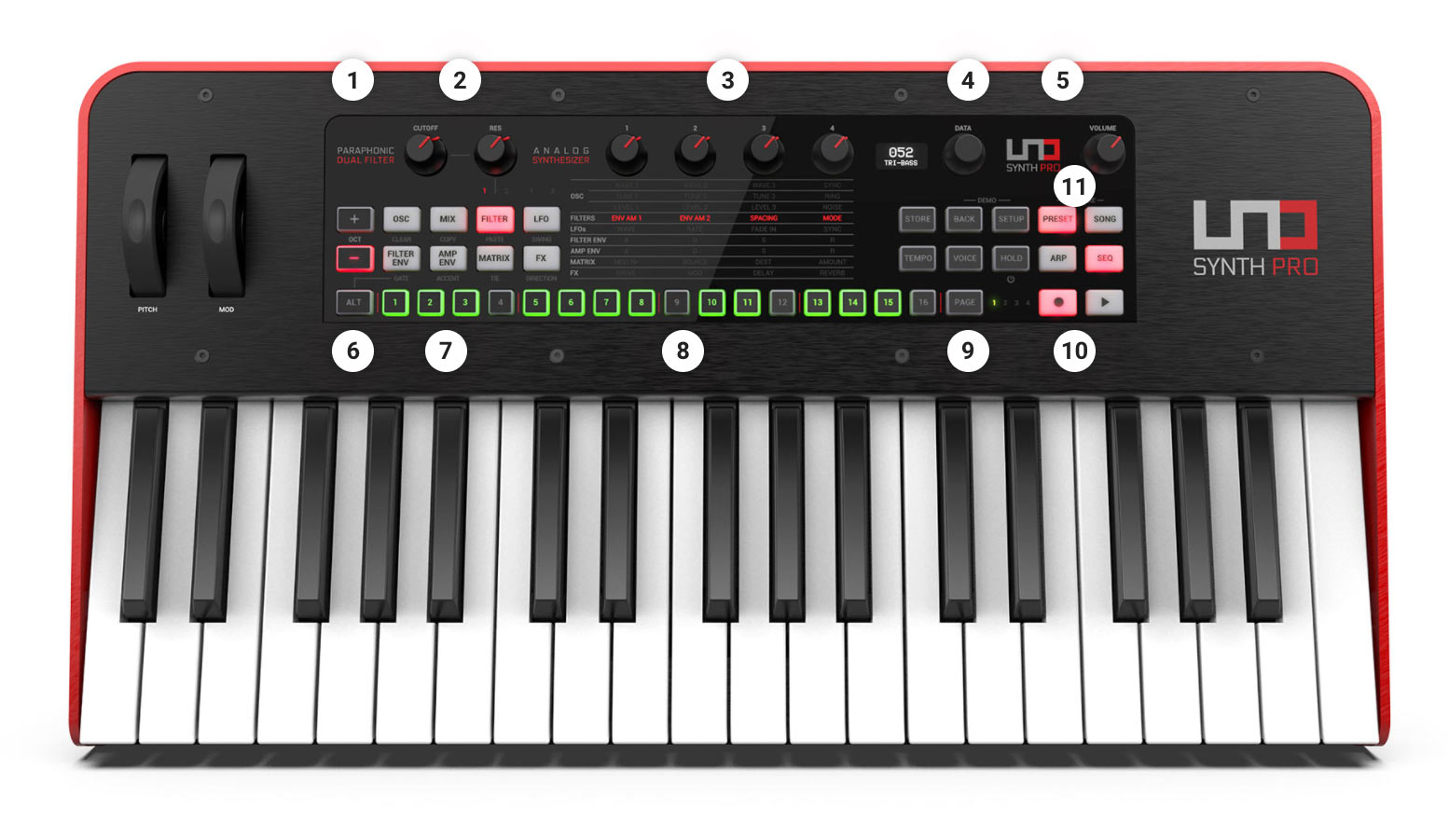
- First-class analog sound
- Dual state variable filters
- Discrete morphing oscillators
- PWM, sync, FM and ring modulation
- Song mode
- 64-step sequencer
- 10-mode arpeggiator
- 12 studio-quality effects
- Analog drive
- Monophonic or 3-note paraphonic operation
- 256 user-editable presets

- Power supply included. Desktop model powered by via USB or power bank
- USB MIDI and firmware update
- Programmable CV/Gate input/output
- Audio input to filters, FX or pass-through
- Balanced stereo outputs
- 5-pin MIDI DIN input/output and Soft Thru
Powerful presets, sequencer and arpeggiator
UNO Synth Pro offers 256 user-editable presets, each capturing the full state of the sound engine from oscillators to effects. An onboard 64-step sequencer offers both step and real-time recording, with automation of over 80 parameters, letting users create incredibly intricate and evolving soundscapes, and even write CV and gate automation.
And a 10-mode arpeggiator makes it easy to create intricate patterns and runs, while a new “chord mode” takes advantage of UNO Synth Pro’s paraphonic design, opening the door to triads and chord work.
Advanced connectivity
UNO Synth Pro offers two noiseless, balanced stereo outputs as well as headphone out, for superior audio quality in any situation. USB and 5-pin DIN MIDI In and Out make it easy to integrate with other synths, Mac/PC and mobile devices, and its assignable CV/Gate connections lets UNO Synth Pro interact effortlessly with a Eurorack or other modular system.
And now, an audio input allows access to the filter and FX section for external signals, in addition to the original pass-through for daisy-chaining multiple units together without using a mixer.
Options, pricing and availability
UNO Synth Pro and UNO Synth Pro Desktop will be arriving in Q1 2021 and are currently available for pre-order from the IK Multimedia online store and from IK authorized dealers worldwide for $/€649.99* and $/€399.99 respectively.


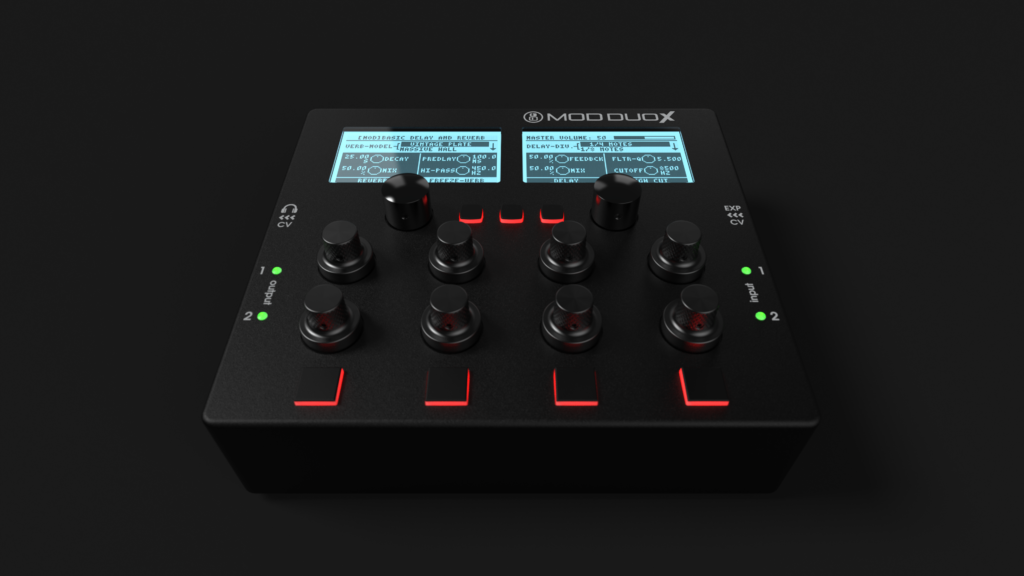
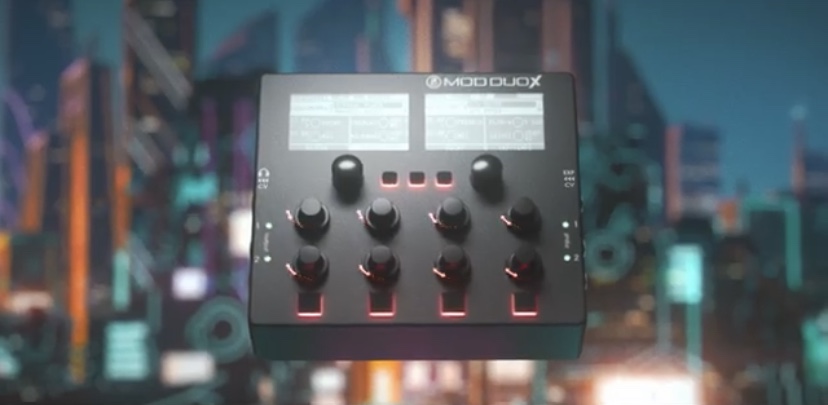






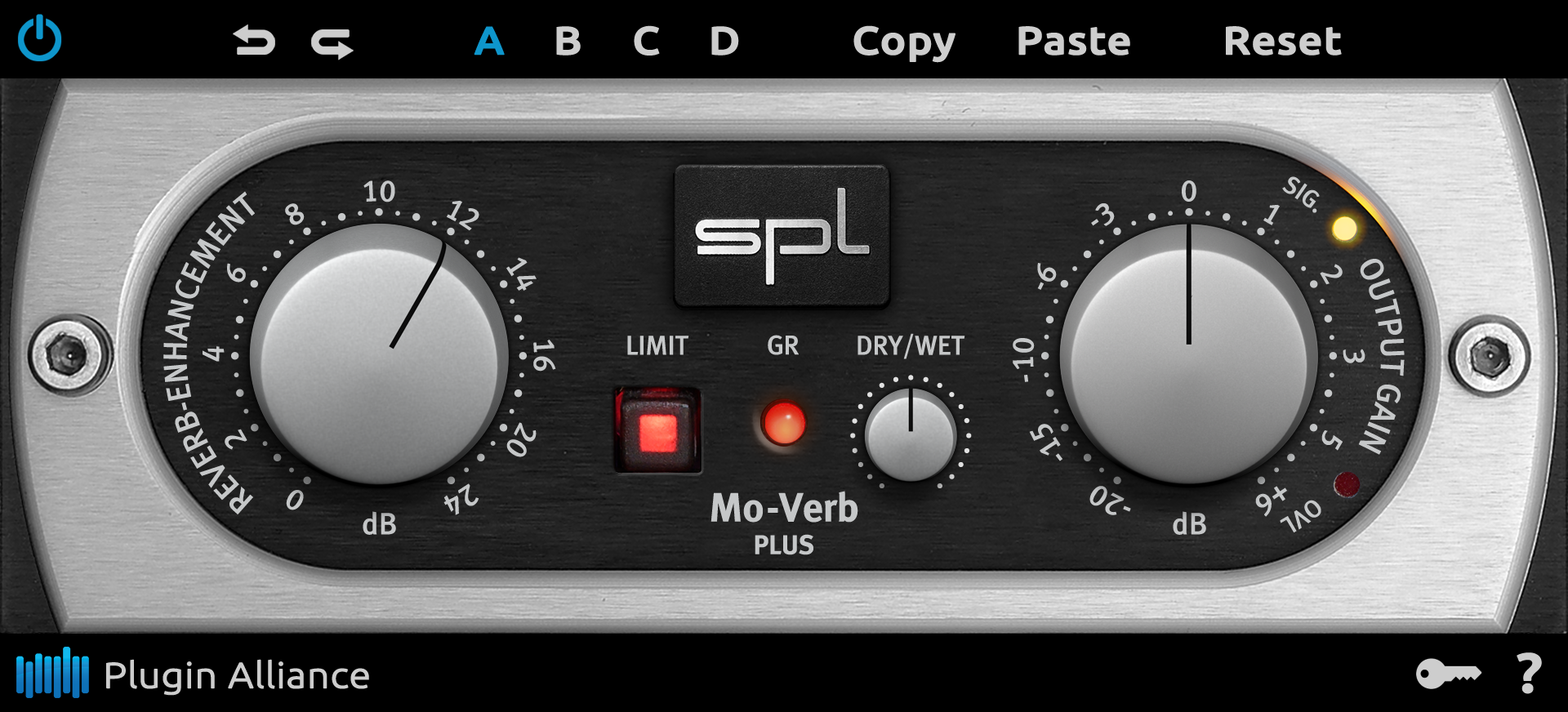 The Attacker Plus Microplug presents part of the same stunning envelope shaping supplied by SPL’s treasured Transient Designer hardware, hitting a home run with software aficionados by replicating the edge and punch provided by the original unit’s ATTACK knob. Indeed, it uses the same so-called Differential Envelope Technology that revolutionized dynamic processing with its level-independent methodology. More meaningfully, though its ATTACK knob lets users dial in all the transient punch needed, Attacker Plus also sports soft peak limiting (LIMIT) access and a DRY/WET control, affording total flexibility across a wide range of material with worry-free workflow in the digital world. With over a decade of hardware modelling experience, Brainworx bestowed a core algorithm upon Attacker Plus that more closely matches the behavior of the original Transient Designer hardware than ever before. Better still, working with Attacker Plus could not be simpler — all attack events can be amplified regardless of signal level, yet such simplicity does not prevent seemingly endless possibilities for studio and live applications. Attacker Plus amplifies just the attack curves of a sound event by focusing on the initial transient instead of specific frequencies to allow instruments to be mixed at lower levels, which, in turn, opens up space in the mix while preserving the relationship between tracks, for example; emphasize the attack of a kick drum or loop to increase power and presence in the mix; adjust apparent ‘distance’ of a microphone by varying the ATTACK values; increase the attack of guitar sounds for in-your-face tone-shaping — anything and everything is possible (within reason)!
The Attacker Plus Microplug presents part of the same stunning envelope shaping supplied by SPL’s treasured Transient Designer hardware, hitting a home run with software aficionados by replicating the edge and punch provided by the original unit’s ATTACK knob. Indeed, it uses the same so-called Differential Envelope Technology that revolutionized dynamic processing with its level-independent methodology. More meaningfully, though its ATTACK knob lets users dial in all the transient punch needed, Attacker Plus also sports soft peak limiting (LIMIT) access and a DRY/WET control, affording total flexibility across a wide range of material with worry-free workflow in the digital world. With over a decade of hardware modelling experience, Brainworx bestowed a core algorithm upon Attacker Plus that more closely matches the behavior of the original Transient Designer hardware than ever before. Better still, working with Attacker Plus could not be simpler — all attack events can be amplified regardless of signal level, yet such simplicity does not prevent seemingly endless possibilities for studio and live applications. Attacker Plus amplifies just the attack curves of a sound event by focusing on the initial transient instead of specific frequencies to allow instruments to be mixed at lower levels, which, in turn, opens up space in the mix while preserving the relationship between tracks, for example; emphasize the attack of a kick drum or loop to increase power and presence in the mix; adjust apparent ‘distance’ of a microphone by varying the ATTACK values; increase the attack of guitar sounds for in-your-face tone-shaping — anything and everything is possible (within reason)!